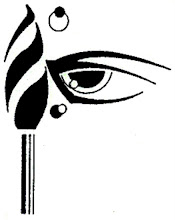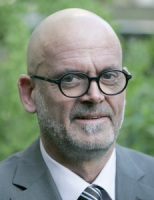Permission given by Michael Geib, Dipl. Geogr, to use translated documents of the History of US Americans in the Rhieland Palatinate.
Die Plakate des Herrn Lesmeister
Docu center Ramstein
1935 – 2006
Han Lesmeister was born in Ramstein and, after finishing Volsschule (elementary, secondary school) there he spent three years studying graphics ad painting at the
Meisterscule (trade school) in Kaiserslautern.
Beginning in the mid 1950’s until 1966, Hans Lesmeistter worked for the American military in Eselsfurth, on Ramstein Air Base and in Stuttgart. It seems likely that a fellow student who already worked on the base, Has-Joachim Schwitzke, helped Lesmeister find a position at the Flieger Haus sometime around 1954. He was one of six Germans working there and, as
“club artist”; he produced the advertising posters for productions ad events taking place at the Flieger Haus in addition to teaching art and handcraft courses.
 |
| Chet Baker Performing in Ramstein |
While in Stuttgart form 1958-1959, e also produced posters and took over other graphic design work. When he came back to Ramstein Air Base in 1960, he took a position as an architectural draftsman and stayed until 1966. During this period, his only painting was occasional portraits for the Americans. Beginning in 1966, Hans Lesmeister began working for German films. From 1966-1981, he worked as an architectural draftsmen for Bayer, a window company, and from 1981-1996 for Kommerling, another window manufacturer. Sometime in the early 1980s, he became a member of the Lanstuhl “Friend so Painting “ society and began consistently producing artwork for their annual exhibitions after only producing the occasional piece as a favor to family and friends since the mid-1960s.
Another exhibition I found interesting was Drei Fotografen Hinterm Zaun- 60 Jahre US-Depot Miesau
There has been a US ammunition depot at Miesau since 1949. It thus counts among the oldest military establishment of the US forces in the Rhineland-Palatinate. At the same time it is one of the most “secret”. A wire mesh fence of some 14 miles in length surrounds the gigantic area. What is hidden behind it can only be surmised and speculated. From the outside, it looks like a green fenced-in wilderness, in which mysterious lights wink at night. Its 60th anniversary was an occasion for the Center for Documentation and Exhibition of the History of US Americans in the Rhineland-Palatinate,
the docu center ramstein in short, to send three photographers behind this mysterious fence. Those in command of the military depot were kind enough to support the enterprise and to allow glimpses of it.
The three photographers take up three different positions in their work;
Isabelle Girad de Sucanton that of the press photographer,
Jorg Heieck that of the documentary photographer and
Thomas Brenner that of the staging photographer. For reasons of secrecy they were not allowed access to some areas in the depot. Nevertheless, their camera lenses give us personal impressions of the largest US ammunition depot in Europe which is normally closed to outsiders.
From the 1950s to today, from the Korean War to the present involvement in Afghanistan, ammunition supplies were and are dealt with via the depot in Miesau. From the second year of its existence, local nationals have also worked at the Ammunition Center next to US soldiers and Labor Service Units. At the height of the cold war, almost 1,700 Germans were occupied at the Center. In the 1990s, the constant reduction in the number of German employees began and the Labor Service units were disbanded. Today, 115 German nationals still work at the Ammunition enter Europe.
Isabelle Girard De Soucanton- (No images available online)
Title of the Works: “Report on the Miesau Depot
The main point of observation with the photo journalist Isbelle Girad de Soucanton is the people, some of whom have been working at the Miesau depot for a very long time. Here, she did not want to take momentary photos of these persons at work, but of a consciously-posed work situation, seemingly frozen. With the exception of the portrait of the deputy director Han-Jurgen Becker, taken in front of a model of the depot, it is not even discernable with the other persons photographed that their work takes place behind the high fences of an ammunition depot. So the photographer combines the portraits in her photo report with detail photographs of precisely these fences surrounding the depot.
Jorg Heieck
Title of the Works: Selection from “Mieau I-XXII”
In the landscape photos which the documentary photographer Jorg Heick has taken of the ammunition depot in Miesau, the function of the location is not at first sight apparent. In most pictures, intensive green dominates views almost always s empty of people. It is only clear from things of secondary importance, a container or a truck parked in the forest, that this is not an abandoned place, that the calm is deceptive. As in a game of hide-and-seek, one only discovers indications of the secret use of the area by looking closely in the luxuriant, natural growth.
Thomas Brenner
Title of the Works: “Fat Boy”
In the distance of the depot seemingly empty of people,
Thomas Brenner places a black-clad person holding a red fabric bomb. He calls it “Fat Boy” in allusion to the atom bombs “Little Boy” and “Fat Man” dropped on Hiroshima and Nagasaki in 1945. A photo gives the impression of “Fat Boy” being a cuddly bomb, the woman in the black mask holding it firmly pressed to her. More disturbing is the black man, whose size, attitude and stature are intimidating enough in themselves. The bomb in his hand becomes a threat. In this way, Thomas Brenner stages a modern, satirical Dance of Death with people and the red “Fat Boy” in front of and in the ammunition depot.






















































